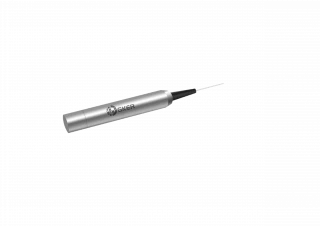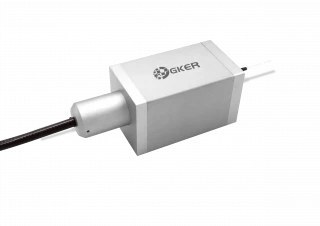Fiber Optic Components and Solution
Explore a diverse range of fiber optic products from 216 global suppliers. Find the right fiber cables and bundles, optomechanics, test and measurement equipment, and more for your optical application needs. Discover our extensive selection of polarization control devices and optical networking solutions.
Frequently Asked Questions
How do optical fibers work?
Optical fibers work by using light to transmit data signals. The fiber optic cable consists of a core, which carries the light signal, and a cladding layer, which keeps the light confined to the core. The core is made of glass or plastic and is coated with a reflective material that bounces the light back into the core, allowing it to travel long distances with minimal loss of signal.
What are the advantages of fiber optics over traditional copper wires?
Fiber optics have several advantages over traditional copper wires, including faster data transmission speeds, higher bandwidth capacity, and greater resistance to interference and signal loss. Some optical fiber cables are also more durable and can transmit data over longer distances without signal degradation.
What are the different types of fiber optic cables?
There are two main types of fiber optic cables: single-mode and multimode. Single-mode fiber optic cables have a smaller core diameter and can transmit data over longer distances, making them ideal for long-haul applications. Multimode fiber optic cables have a larger core diameter and are better suited for shorter distances and high optical power transmission over short distances.
What type of fiber test and measurement equipment is available commercially?
Commonly available fiber test and measurement equipment includes optical power meters, light sources, visual fault locators, optical time-domain reflectometers, polarization analyzers, fiber inspection microscopes, and chromatic dispersion analyzers. These devices are used to test fiber optic cables for breaks, faults, and contamination, measure power levels and signal quality, and detect polarization-related issues. The specific type of equipment required will depend on the specific application and testing requirements.
Why is polarization control so important in fiber optics?
Polarization control is important in fiber optics as it affects the quality and reliability of transmitted signals. Any polarization changes can lead to signal distortion and loss, reducing signal-to-noise ratio and limiting overall performance. Controlling polarization ensures that signals remain polarized, reducing signal distortion and loss, especially in high-speed and high-bandwidth applications such as telecommunications and data centers.
What is the brief history of optical networking?
The history of optical networking dates back to the 1960s when the first experiments with optical fibers were conducted. The first practical optical fiber was developed in 1970 by Corning Glass Works, and by the late 1970s, the technology had advanced enough for the first commercial use in telecommunications. In the 1980s, optical networking began to gain traction as a viable alternative to traditional copper-wire networking. The introduction of erbium-doped fiber amplifiers in the mid-1980s allowed for the transmission of signals over much longer distances without degradation. By the 1990s, optical networking had become the standard for long-distance telecommunications, with major advances such as dense wavelength division multiplexing (DWDM) and the introduction of optical cross-connects. In the early 2000s, the introduction of optical packet switching and optical burst switching helped to further advance the technology. Today, optical networking is the backbone of the internet and plays a critical role in modern communication networks, providing high-speed, high-bandwidth connections for businesses, governments, and individuals around the world.
Our Fiber Optics category offers a wide selection of products from over 216 suppliers worldwide, including Fiber Cables & Bundles, Fiber Optomechanics, Fiber Test & Measurement, Optical Fibers, Polarization Control, and Optical Networking solutions. Whether you're looking for standard or custom solutions, our range of fiber optic products will meet your needs. Browse our selection to find the right products for your application.





